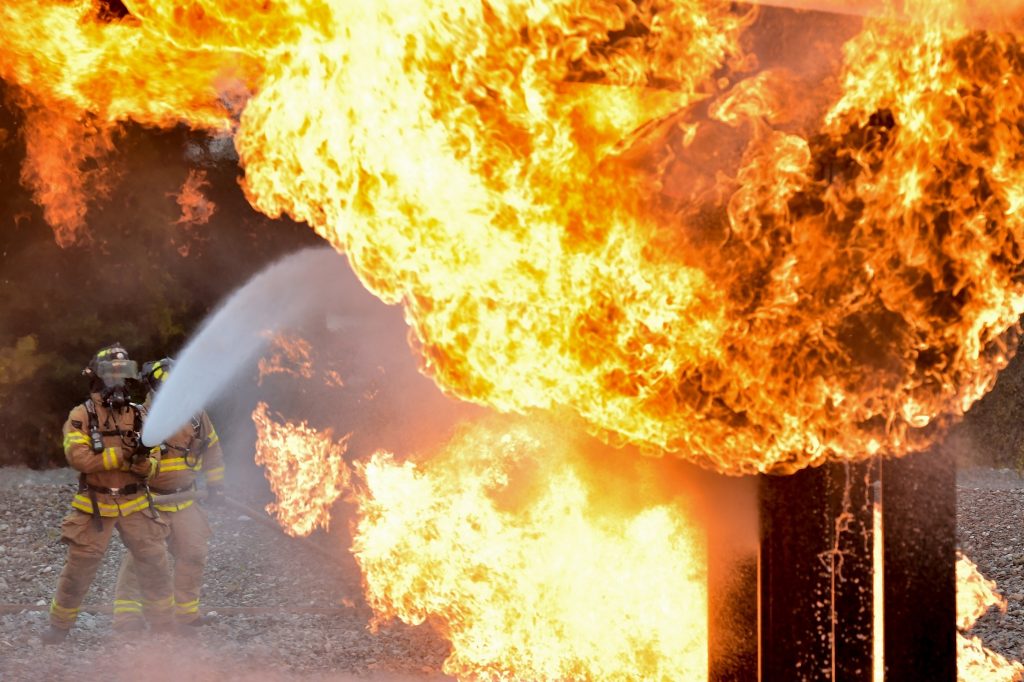Educating firefighters to knock down the spread of misinformation
BY: Nick Halmasy
There was no shortage of opportunities to feel failure in the fire service. Due to the fast-paced, unpredictable manner of the work (from medical calls to structure fires), failure was built into the equation. We’d both pushed back against fate while also humbly resigning to it. Often, failure felt the hardest when there was loss of life. These lessons are hard won, but unfortunately bountiful in our history of firefighting.
Since leaving the service and focusing on mental health, I have rarely met this feeling with any real intensity. Certainly, people have come through my door and have left much the same. Therapy is difficult and not everyone is ready – and, not every therapist is effective for every person either. I’m no different. This is a collateral dance that both client and clinician do. Certainly, there are hues of this feeling in those times where I have found myself ineffective. But, like a well vented fire, this feeling is ever growing for me. And, it has little to do with my chair, in this case.
It has to do with how we are educating our firefighters.
While a frequent consumer of social media, I’ve had my exposure to pictures and images of “health information” that have floated around. In all cases to this point, I’ve simply let this go. Perhaps, so have you. Surely, I would think, no harm may come of believing in a sauna’s ability to “leech” toxins from one’s body as researcher Jennifer Keir debunked, given that there is a galaxy of other health benefits that are grounded in scientific research. And there is certainly no shortage of these.
I wrote a piece in response to a meme identifying Post Traumatic Stress Disorder (PTSD) as an injury as indicative by physical changes in the brain. This was the beginning of a trend, although this one was much tamer than the newer memes surfacing. And this is where I’ve noted that my failure to object to the above has only aided in an ever growing opinion-masked as fact phenomenon. My stance on PTSD has been clearly laid out in other areas, but I feel relatively little remorse given that I’m clear that if identifying with an “injury” gets a frontline worker through the door, so be it. I don’t blame the firefighter for believing it’s an injury after all, because they are being constantly told that it is. The reason for this change of label, as far as I am able to tell, is more of social prerogative and less of scientific understanding. And social movements need not impede one’s ability to get help and support.
To me, the Injury versus Disorder debacle is clear. We, as educators, have been ineffective at illustrating how the brain works, how it is molded and shaped by our experiences. And, while it may be easy to quickly label smoking as self-injurious, in the same way that it is physically injurious, it seems a far greater stretch to give chronic video game use or obesity the same title. Yet, we find comparable or sometimes greater damage to the brain structures involved in these other aversive life events as we do in PTSD.
Since that article, another even more harmful meme has surfaced and been shared widely. And this new educational image doesn’t seem to have the time for such frivolities, like evidence based research. It cuts right to the chase. This new health poster identifies that, in paraphrase, if you are afflicted with anything other than “PTSI”, you were born that way. This presents itself falsely—unless, I have missed some new, breaking research—as fact. No discussion of vulnerabilities, or predispositions; no flavoring of the fact that nature and nurture converge meaningfully and still, mental languishing may only be turned on with the right environmental experiences shaded with certain cognitive outlooks. Genetics, environment, cognitive processes and some dumb, blind, bad luck.
All this to say that the proliferation of such clearly opinion-based educational pieces is an indication of our not effectively communicating the science, research, and our findings as they come in a meaningful way. We can expect, as occupational hazard, the rogue or outlier article testing our beliefs and checking our theories. And, perhaps through this tension we may come to find gaps or holes in our own work, as biases are identified by the disinfecting nature of sunlight. The harm, though, is coming swiftly and without much recourse in the social movements of firefighters. Because, as a whole, the good-hearted and well-wishing in the fire service will push a quick share of a seemingly innocent educational poster under the premise that it was “the least we could do”.
But, without teaching critical skills, proper psychoeducation, our well-meaning and eager to support firefighters may, in turn, be spreading stigma inducing and harmful materials under the guise of support.
Trying to course correct through the helping identify these maladaptive pieces, in turn, may be the “least we can do”.
ABOUT THE AUTHOR: Nick Halmasy is a former firefighter and fire instructor with a decade of experience in the service. He has completed a Master’s of Arts in Counselling Psychology and is a Registered Psychotherapist with a clinical practice specialty in first responders mental health. Nick started After the Call to develop and disseminate free mental health resources to both First Responders and their Families.

